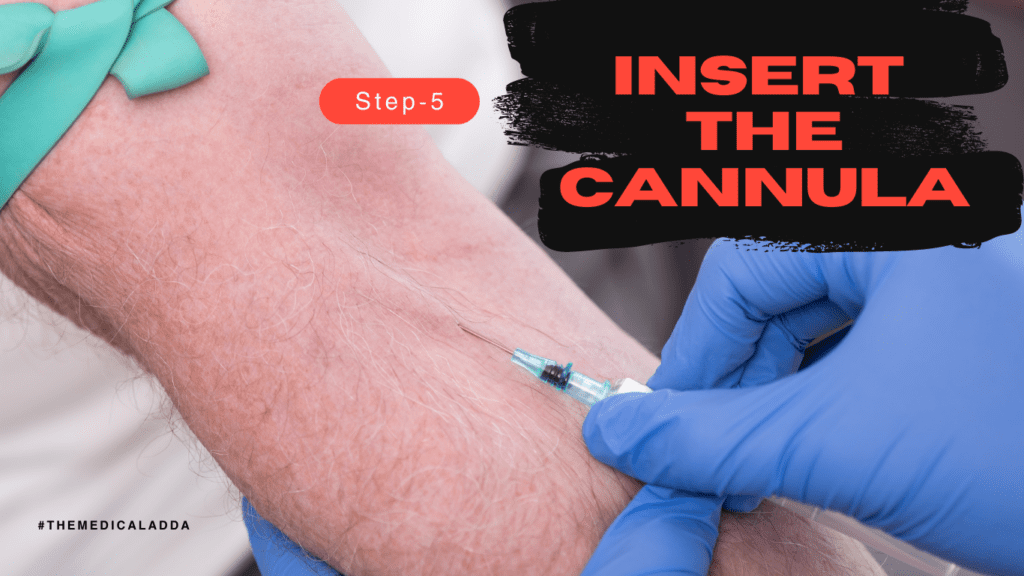Welcome to the world of IV cannulation, where we will guide you through the ultimate technique for successful insertion. In this friendly and comprehensive guide, we’ll provide you with step-by-step expert instructions that will equip you with the skills to perform this vital medical procedure flawlessly.
IV cannulation may seem daunting at first, but fear not! We’ve got you covered. Whether you’re a beginner looking to establish a solid foundation or an experienced healthcare professional seeking to refine your technique, our friendly instructions will support your journey.
Imagine the confidence you’ll gain as we walk you through each stage of the process, from selecting the perfect vein to securely positioning the cannula. Our expert instructions are designed to cater to various scenarios and patient populations, ensuring you’re prepared for any challenge that comes your way.
By following our friendly step-by-step instructions, you’ll not only minimize the risk of complications but also enhance your patients’ experience. We understand the importance of sterile techniques, optimal insertion angles, and proper securement methods, and we’ll guide you every step of the way.
As you delve into the expert instructions, you’ll find additional resources such as visual aids, videos, and case studies, all aimed at providing a practical understanding of the technique. We believe that a combination of knowledge and hands-on experience is key to mastering IV cannulation.
So, join us on this exciting journey as we unravel the secrets of the ultimate IV cannulation technique . Let’s enhance your skills, boost your confidence, and deliver optimal care to your patients and know the principles of cannulation. Get ready to become a pro in the art of IV cannulation!

Step 1: Prepare the Patient and Equipment
Before beginning the procedure, it is important to prepare the patient and gather all necessary equipment. The patient should be informed about the procedure and given the opportunity to ask any questions. The healthcare provider should also wash their hands and put on sterile gloves.
The equipment needed for IV cannulation includes a cannula, sterile saline solution, an IV catheter, and a tourniquet. It is important to ensure that all equipment is sterile and ready for use.

Step 2: Select the Vein
The next step is to select the appropriate vein for cannulation. Typically, the veins on the back of the hand or on the forearm are used, but the healthcare provider may also consider other sites, depending on the patient’s medical condition and the purpose of the IV. The healthcare provider will assess the vein for its size, depth, and accessibility.

Step 3: Apply the Tourniquet
Once the vein has been selected, the healthcare provider will apply a tourniquet to the patient’s arm to increase the visibility and accessibility of the vein. The tourniquet should be snug but not too tight, as this can cause discomfort and impede blood flow.

Step 4: Clean the Site
The next step is to clean the skin around the selected site with antiseptic solution. The healthcare provider will use a circular motion to clean the area, starting from the center and working outward. It is important to allow the antiseptic solution to dry before proceeding.

Step 5: Insert the Cannula
Once the site has been cleaned and dried, the healthcare provider will insert the cannula into the vein. The healthcare provider will use their non-dominant hand to stabilize the vein, and their dominant hand to insert the cannula. The cannula should be inserted at a 15 to 30-degree angle and advanced slowly until blood can be seen in the flashback chamber. At this point, the healthcare provider will advance the cannula a few more millimeters into the vein.

Step 6: Secure the Cannula
After the cannula has been inserted, the healthcare provider will secure it in place with tape or a dressing. The tourniquet can then be removed, and the healthcare provider will flush the cannula with sterile saline solution to ensure proper placement.

Step 7: Monitor the Patient
After the cannula has been secured, the healthcare provider will monitor the patient for any signs of complications, such as bleeding, infection, or phlebitis. The patient will also be monitored for any adverse reactions to the medication or fluids being administered through the IV.

Finally, the healthcare provider will monitor the patient for any signs of complications, such as bleeding, infection, or phlebitis. The patient will also be monitored for any adverse reactions to the medication or fluids being administered through the IV. If any complications arise, the healthcare provider will take appropriate measures to address them.
conclusion
iv cannula insertion is a common medical procedure that is performed in various healthcare settings. Proper technique and preparation are crucial to ensure that the procedure is safe and effective. By following these steps, healthcare providers can perform IV cannulation with confidence and provide the necessary care to their patients.
FAQ & answers
Q: What is IV cannulation?
A: IV cannulation is a medical procedure that involves inserting a small tube, called a cannula, into a vein to administer medications, fluids, or other treatments directly into the bloodstream.
Q: Why is IV cannulation important?
A: IV cannulation allows healthcare providers to deliver medications, fluids, or other treatments quickly and directly into the bloodstream. It is commonly used in hospitals, clinics, and emergency departments to provide essential care to patients.
Q: How is the vein for IV cannulation selected?
A: The healthcare provider will carefully assess the patient’s veins, usually on the back of the hand or forearm, considering factors such as size, depth, and accessibility. They may choose alternative sites depending on the patient’s condition and the purpose of the IV.
Q: What is the correct technique for IV cannulation?
A: The procedure involves preparing the patient and equipment, applying a tourniquet to make the vein more visible, cleaning the site with antiseptic solution, inserting the cannula into the vein at a 15 to 30-degree angle, securing it in place, and flushing with sterile saline solution. many time we can’t fine vein the ultrasoundguided intravenous cannulation to be done by specialist
Q: Does IV cannulation hurt?
A: The insertion of the cannula may cause some discomfort, often described as a brief sharp sensation. However, healthcare providers take measures to minimize pain, such as using smaller gauge needles and employing local anesthesia if necessary.
know 5 Tricks for a Painless IV Cannulation Experience as follow
Q: Are there any risks or complications associated with IV cannulation?
A: Like any medical procedure, IV cannulation carries certain risks. Potential complications include bleeding, infection, phlebitis (inflammation of the vein), infiltration (leakage of fluid into surrounding tissues), and allergic reactions to medications. However, these risks can be minimized by following proper technique and maintaining sterile conditions.
Q: How long does an IV cannula remain in place?
A: The duration depends on the patient’s condition and the prescribed treatment. In some cases, the cannula may remain in place for a few hours, while in others, it may be needed for several days or even longer. The healthcare provider will regularly assess the site and determine when it should be removed.
Q: How can I ensure the success of IV cannulation?
A: Success in IV cannulation requires proper training, adherence to sterile techniques, and regular monitoring of the patient’s condition. It is important to stay updated on best practices and keep in mind that factors associated with peripheral intravenous cannulation and seek guidance from experienced healthcare professionals. please refer iv cannulation procedure for nurses pdf
Q: What should I do if complications arise after IV cannulation?
A: If complications such as bleeding, infection, or pain occur, it is crucial to inform the healthcare provider immediately. They will assess the situation and take appropriate measures to address the issue, which may include removing the cannula and providing appropriate. treatment.

Greetings! This is my first visit to your blog! We are a collection of volunteers and starting a new project in a community in the same niche. Your blog provided us useful information to work on. You have done a marvellous job!
Lovely site! I am loving it!! Will come back again. I am taking your feeds also.
I’m so in love with this. You did a great job!!
Thanks for posting. I really enjoyed reading it, especially because it addressed my problem. It helped me a lot and I hope it will help others too.
Thank you for providing me with these article examples. May I ask you a question?
You’ve the most impressive websites.
May I request more information on the subject? All of your articles are extremely useful to me. Thank you!
I’m so in love with this. You did a great job!!
Your articles are extremely helpful to me. Please provide more information!
You helped me a lot by posting this article and I love what I’m learning.
Thank you for writing this post. I like the subject too.
I really appreciate your help